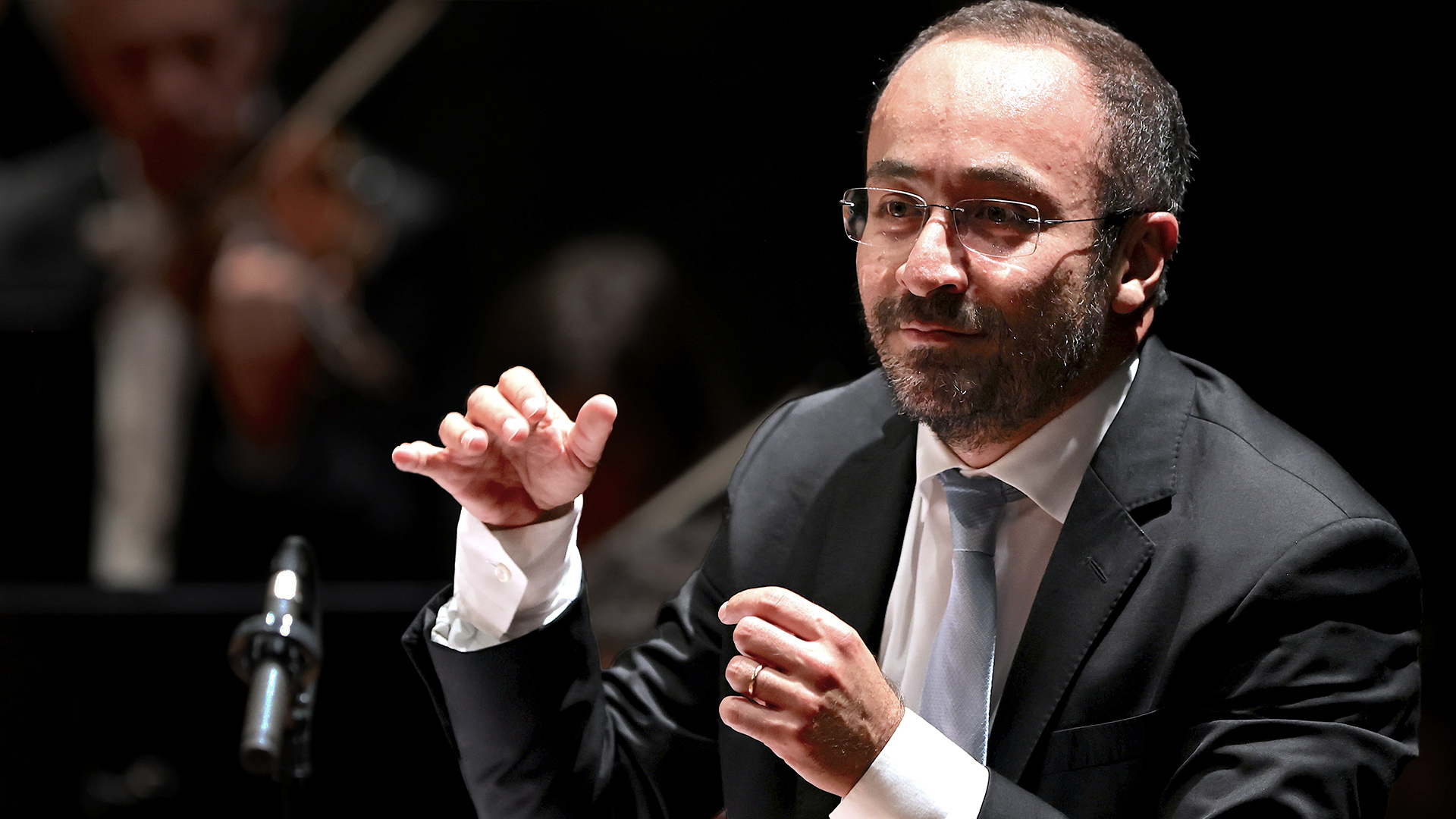FRANZ JOSEPH HAYDN
Die Sieben Letzten Worte Unseres Erlösers Am Kreuze Hob. XX:1
(Le sette ultime parole di Cristo sulla croce)
Acting voice
Linda Gennari
Conductor
Riccardo Minasi
Opera Carlo Felice Genova Orchestra
In collaboration with Teatro Nazionale di Genova
In Haydn’s time, in the Church of the Santa Cueva Caves, near the Episcopal city of Cadiz in southern Spain, the Good Friday liturgical ceremony went something like this: Covered with a black cloth the walls, doors and windows of the cathedral, at midday the doors of the temple were closed and the priest, following a brief organ prelude, went up to the pulpit to recite the first of the biblical seven words of Christ on the Cross and the sermon commenting on it; he then went to the altar where he knelt for about ten minutes so that the assembly could concentrate in meditation. Translated with DeepL.com (free version) Then he would go back up to the pulpit to recite the second and then the other biblical words. The function of the music, in addition to providing the ‘Introitus’ and ‘Exitus’ was thus to ‘comment’ on those ten minutes of meditation between the sermon and the declamation of the next word.
By 1785 Haydn’s fame had gained a European dimension: From Paris, the society ‘Le Concert de la Loge Olympique’ commissioned the Austrian musician to write a set of six symphonies; from Naples, Ferdinand IV commissioned a series of concerts ‘for the organised lyre’ (a kind of hand-cranked accordion); from numerous other centres, Prince Esterházy, his patron, was being asked for permission to allow his Kappelmeister to come and conduct his Symphonies (which by that time had reached the considerable number of 82). But the most unusual commission came to Haydn from Cadiz: seven orchestral ‘Adagios’ for the Good Friday ceremony. “It was not an easy thing to compose seven ‘adagios’ of about ten minutes each without tiring the listener,” the Austrian would write years later to one of his interlocutors, justifying the particular pleasure he got from having brilliantly passed that unusual artistic test. The problem, in fact, was first of all the absence of a reference model, since the Seven Words had only existed musically as a vocal polyphonic genre up to that time. But the obstacle was overcome with a device as simple as it was ingenious: anyone observing the Haydnian score of the Seven Words would find in the incipit of each “Adagio” the seven biblical expressions printed in correspondence with the notes on the staff of the first violins. In other words, the melody of the violins, which then becomes the main theme of each movement, is articulated as if it were to be sung, as if the Haydnian opera were a kind of vocal composition without voices, or rather with only theoretical voices. In reality, only the initial melodic cue is vocal, but this is enough to determine the different character of the pieces, despite the persistence of the same agogic brand. The elaboration of the material, on the other hand, follows the sonatistic logic typical of Haydn’s instrumental writing tout court. All the pieces are in fact structured in sonata form (hence that ossiano 7 sonate… suggested by the title), with the exception of the frame pieces, which are the Introduction and the concluding ‘Terremoto’, which is also the only one with a strongly descriptive character and in fast tempo (‘Presto e con tutta la forza’).
The opera’s first official performance took place in Cadiz on 6 April 1785, but it seems to have been preceded by two private performances in Vienna and Bonn, where the young Beethoven was among the orchestral players. In addition to the original one for orchestra, there are three versions of the work, respectively for soloists, choir and orchestra (popularised under the abbreviated German title Die Sieben letzen Worte unseres Erlösers am Kreuze), for string quartet and piano, but the ‘Joseph Haydn Institute’ in Cologne, curator of the Austrian composer’s complete works, has never definitively established whether they were written by Haydn himself or whether they were written by others and simply authorised by him.
Enrico Girardi

